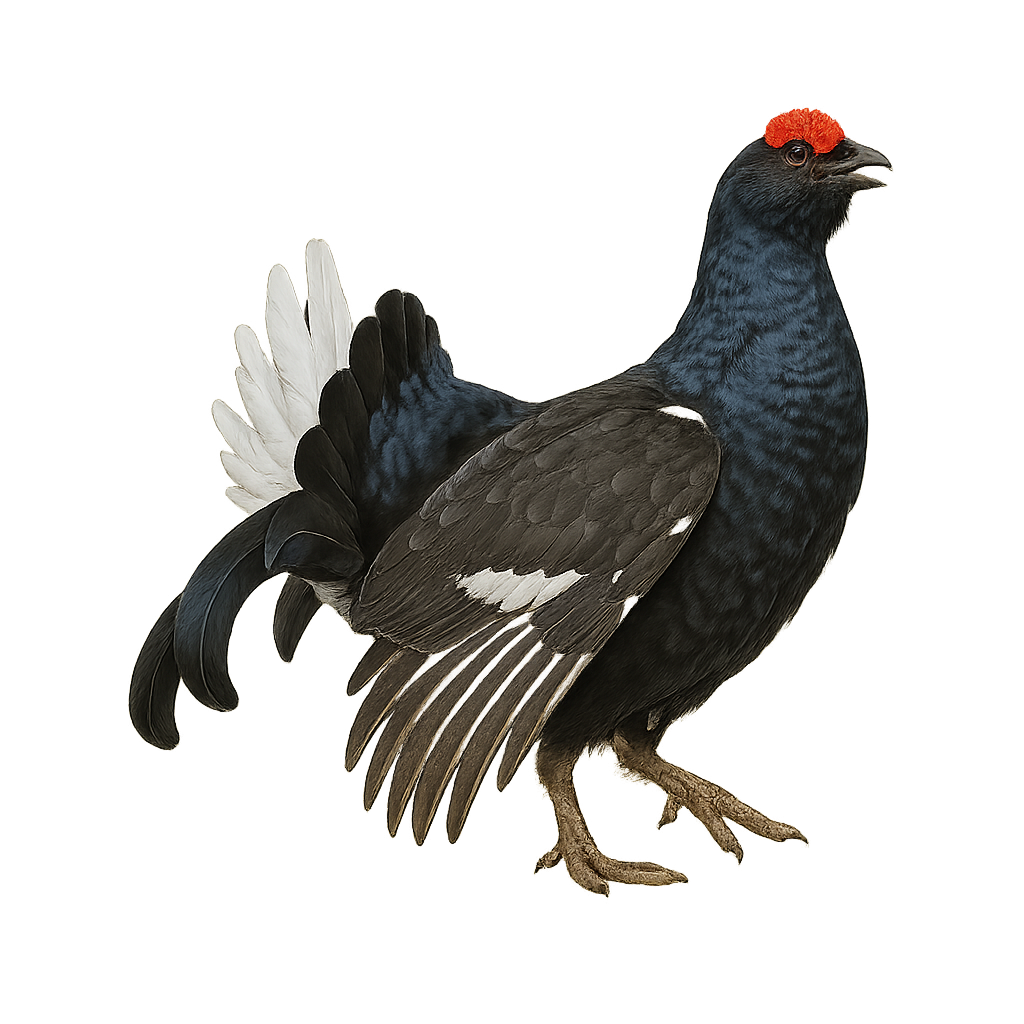Observe and photograph a species in its natural habitat
Learn where and when to observe a species in the wild, how to recognize it in the field, and what habitats it lives in. Get photography tips adapted to its behavior and capture stunning images without disturbing the animal. For full details, open the complete profile in the WildlifePhotographer app.
Black Grouse
Scientific name: Lyrurus tetrix

IUCN Status: Least Concern
Family: PHASIANIDAE
Group: Birds
Shyness: Suspicious
Safe distance: 30 m
Breeding season / Courtship: 01.03-31.03
Gestation: 25 à 27 jours
Births: 26.05-27.06
Habitat:
Coniferous forests, mountains
Description:
The Western Capercaillie, or Lyre Grouse, is a large bird primarily found in the coniferous forests and wooded areas of Eastern and Northern Europe, notably in Scandinavia, Russia, and Poland. It typically measures about 40 to 50 cm in length and weighs between 500 and 800 g. Its plumage is mainly brown and black, with white markings and red hues on the chest. The Lyre Grouse is particularly famous for the spectacular courtship dance of the male, who spreads his feathers in a lyre shape to attract a female. It primarily inhabits dense forest habitats and feeds on berries, seeds, young shoots, and insects. While its population remains relatively stable in some areas, the Lyre Grouse is threatened by habitat loss, deforestation, and human disturbances.
Recommended lens:
>=300 mm
Photography tips:
Use a telephoto lens to photograph from a distance, respecting the discreet nature of the species.
Photograph early in the morning or late in the afternoon, when the soft light highlights the lyre-shaped tail and vibrant plumage of the capercaillie.
Look for it in alpine and subalpine habitats, such as coniferous forests with clearings, heathlands, bogs, and rhododendron areas, at elevations between 1,700 and 2,300 meters.
Be patient and discreet to avoid disturbing its natural behavior. Avoid sudden movements and maintain silence.
The capercaillie is a protected species in certain areas due to habitat loss and human disturbances. It is essential to respect its environment and minimize disruptions, especially during the breeding and hibernation periods.
Ready to take action?
Choose your platform and start your free trial today



